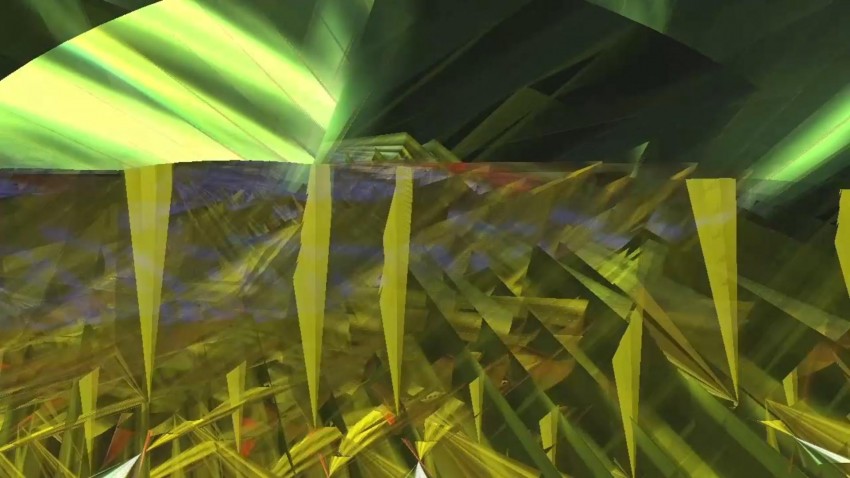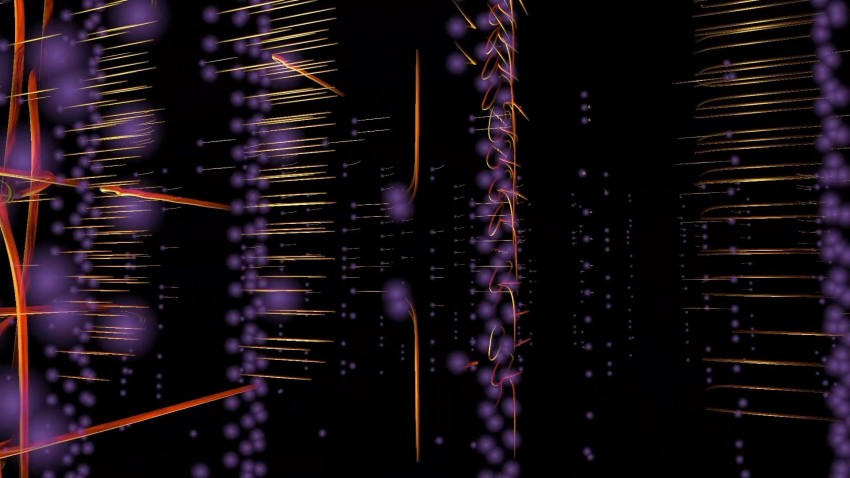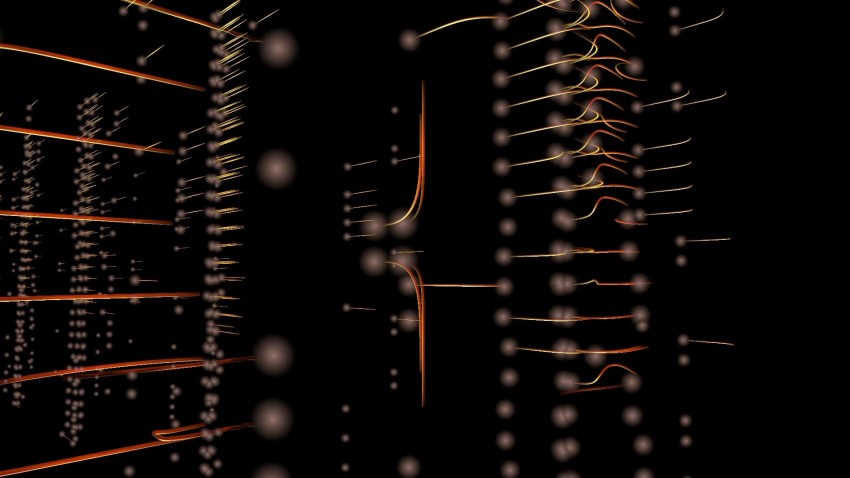Blog
Blog-posts are sorted by the tags you see below. You can filter the listing by checking/unchecking individual tags. Doubleclick or Shift-click a tag to see only its entries. For more informations see: About the Blog.
ZA!ZA!ZA!ZA!ZA!ZA!
ZA!ZA!ZA!ZA!ZA!ZA!
ZA!ZA!ZA!ZA!ZA!ZA!
ZA!ZA!ZA!ZA!ZA!ZA!
ZA!ZA!ZA!ZA!ZA!ZA!
ZA!ZA!ZA!ZA!ZA!ZA!
Alle Jahre wieder entfesselt das ENSO Phänomen immense Naturgewalten mit globalen Auswirkungen. Das gehäufte Auftreten und die steigende Intensität wird mit der Erderwärmung in Zusammenhang gebracht, sodass in Zukunft nie dagewesene Extremwerte erwartet werden können.
Das Ausstellungsexponat ENSO soll den Betrachter informieren und so zu einer bewussteren Lebensweise animieren. Dazu soll das Exponat dem Betrachter zum einen auf emotionale Weise die länderspezifischen Auswirkungen und zum anderen die Entstehungsweise des ENSO Phänomens nahebringen.
An einem Terminal inmitten eines begehbaren, immersiven Raumes, kann der Betrachter zwischen der Darstellung von Ablauf, Auswirkung und Auftreten mittels eines Touchdisplays wählen und diese stellenweise interaktiv beeinflussen.
Engram : Data Sculpture, 3+1 AP
6M x 5M, 3MM LED Media Wall, Custom Software
_
From February 7 through March 17, 2018, Pilevneli Gallery presented Refik Anadol’s latest project on the materiality of remembering. Melting Memories offered new insights into the representational possibilities emerging from the intersection of advanced technology and contemporary art. By showcasing several interdisciplinary projects that translate the elusive process of memory retrieval into data collections, the exhibition immersed visitors in Anadol’s creative vision of “recollection.”
“Science states meanings; art expresses them,” writes American philosopher John Dewey and draws a curious distinction between what he sees as the principal modes of communication in both disciplines. In Melting Memories, Refik Anadol’s expressive statements provide the viewer with revealing and contemplative artworks that will generate responses to Dewey’s thesis.
Comprising data paintings, augmented data sculptures and light projections, the project as a whole debuts new advances in technology that enable visitors to experience aesthetic interpretations of motor movements inside a human brain. Each work grows out of the artist’s impressive experiments with the advanced technology tools provided by the Neuroscape Laboratory at the University of California, San Francisco. Neuroscape is a neuroscience center focusing on technology creation and scientific research on brain function of both healthy and impaired individuals. Anadol gathers data on the neural mechanisms of cognitive control from an EEG (electroencephalogram) that measures changes in brain wave activity and provides evidence of how the brain functions over time. These data sets constitute the building blocks for the unique algorithms that the artist needs for the multi-dimensional visual structures on display.
Anadol’s installations do not only address a productive espousal of cutting-edge technology and art but also a strong preoccupation with the study of human memory from Ancient Egyptians to Blade Runner 2049. The exhibition’s title, Melting Memories, refers to the artist’s experience with unexpected interconnections among seminal philosophical works, academic inquiries and artworks that take memory as their principal themes. The title further draws attention to the melting of neuroscience and technology into these centuries-long philosophical debates, questioning the emergence of a new space where artificial intelligence is not in conflict with individuality and intimacy.
_
PROCESS
Data collection process utilized a 32-channel Enobio and standard protocol configuration. Participants were instructed to focus on specific long-term memories during the recording process. A control recording was also conducted to identify artifacts to later filter with adaptive notch filtering and limiting the frequency range. For analysis we focused on beta (13-17Hz) and theta (3-7Hz) channels, isolating activation points corresponding to short term and long-term (specifically episodic) memory. Our selections were the Fp1, Fp2, F7, F8, P3, P4, C3, C4, T7, T8, O1, and O2 nodes, which were also used to drive noise parameters within the real-time simulation. For scaling we applied Higuchi’s fractal dimension algorithm and used FFT for a moving average. Recurrent neural nets (via EEGLearn) we used on the recording sessions to generate spectral outputs, which were then utilized as height maps for the visual representation pipeline.
_
Bashivan, et al. "Learning Representations from EEG with Deep Recurrent-Convolutional Neural Networks. International conference on learning representations(2016)
VVVV
Transposing EEG data in to procedural noise forms was a really engaging challenge, both technically and conceptually. In the input data and our mapped representation you can find recurrence and rhythm but also hints of higher dimensional structures. We wanted to do this efficiently and in real time and so working on Melting Memories dovetailed nicely with putting the last touches on FieldTrip, an (at the time pre-release) open source GPU library for HLSL/VVVV. It allowed us to use a composite design pattern to very quickly iterate while producing the aesthetic structures used in the project. This approach enabled us to really explore some deeper procedural functions whilst keeping a completely modular graphics pipeline. This modularity makes it easy and clean to expand on the project’s abstracted content in really interesting ways, such as further integration of machine learning on the source data, evolving rendering techniques
and the creation of sculpted physical artifacts.
_
CREDITS
Designed &Developed at Refik Anadol Studio
Nicholas Boss
Efsun Erkilic
Kian Khiaban
Ho Man Leung
Raman K. Mustafa
Toby Heinemann
Sound Design : Kerim Karaoglu
Software Development : Kyle McLean / Steffan Klaue
Scientific Support
UCSF / Neuroscape Lab Members
Adam Gazzaley, M.D., PH.D.
Covering 71% of the Earth’s surface, water is an important part of the global ecosystem. Every development and change in the sea also affects life on earth. Datasets help us to understand conditions and ecological processes such as changes in salinity or temperature. Scientists of various disciplines have spent the last 100 years gathering data in order to analyse it and discover relations between different sets of data.
However, the more frequent and more comprehensive studies are being conducted, the more accurate predictions can be made about the future. These predictions directly influence political, economical and social decision making processes on a global scale.
30° allows the viewer to explore the analysis of large quantities of data on an aesthetic as well as a spatial level. The exhibited data originates from measurements taken along the 30th meridian west, which, for the most part, runs across open ocean waters. Short animations visualise parameters such as temperature, salinity or oxygen. Graphics are used to visualise data fluctuations and comparisons of individual points of measurement. A scale allows the chronological classification of each measurement. 30° hopes to draw attention to the efforts of scientists who have dedicated their work to gaining a better understanding of the sea in order to preserve the world’s oceans.
credits thanks to robert willner & marco ritter for their >> Weekend Workshop 'DX11.particles'@ NODE17 Forum for Digital Arts << ..and for the bad english so that I also understood everything (which is not always the case for workshops). DX11.Particles::great stuff! two years ago I started with dottore´s dx9 gpu particles shader library. very complicated to handle. but my gpu partially burned off because of a piece of advice that I did not quite understand. and that was it with dx9 particles. <<>> music :: stavroz - merci éclair
credits David Sherpa
This augmented reality mirror, based on point of view, superposes a virtual layer on reality. It tries to explore alternative medium for augmented/mixed reality. However, the same setup was already made by Microsoft Research in 2012 https://www.microsoft.com/en-us/research/video/holoflector/ .
Made possible thanks to the material lend by Stereolux, Nantes and the help of Charles Loisy (Stereolux multimedia manager).
credits Joshua von Hofen, Nils Nahrwold, Muthesius Kunsthochschule Kiel
Responsive Fabric
Joshua von Hofen
Nils Nahrwold
2015/16
Supervision by Prof. Tom Duscher and Chris Engler
A cloth that gives haptic feedback. It translates touch into sound and vision.
Made with vvvv and a Kinect 2 sensor.
The installation „Responsive Fabric“ turns an seemingly ordinary cloth into a tangible interface. An interaction with the surface of the fabric creates a multi-sensory experience that expands perception through a virtual layer. Touching the cloth generates acoustic and visual stimuli. By altering the physical form through pressing and stretching the fabric, the object also transforms visually and produces sounds. With the translation of haptics into sound and image, the object becomes an audiovisual instrument and an interface between reality and virtuality.Done at the Muthesius University for fine Arts and Design Kiel.
Currently shown at the Visible Sound Exhibition at Kunstkraftwerk Leipzig.
credits Moritz Aznan, Nils Nahrwold (@multiNIL), Muthesius Kunsthochschule Kiel
Aircade is the result of three month group project at the Muthesius University of Fine Arts and Design. It was developed by Moritz Aznan and Nils Nahrwold and supervised by prof. Frank Jacob as part of the Interface Design Masters program.
The idea was to upgrade the classic airhockey-table with digital technologies to change the game entirely. The focus besides developing the necessary soft- and hardware, lay on designing games that require dexterity, cleverness and precision, so the users can make up their own new tactics.
special thanks to chris (u7angel) and Jens (jens.a.e) for support!
credits wirmachenbunt, Expotec, copyright communication
Porsche Under Control is a kinetic, interactive exhibit. While the car encounters rough terrain, your goal is to keep the balance. While this is a hard task, the cars algorithms are the ones to beat.
The exhibit concept is done by Copyright Communication (awesome, Mert)
Engineering and construction by Expotec Mainz
Software and production by wirmachenbunt
Thanks to Heinrich for the algorithm support !
anonymous user login
Shoutbox
~1d ago
~7d ago
~7d ago
~8d ago
~21d ago
~1mth ago
~1mth ago
~1mth ago
~1mth ago
~1mth ago










